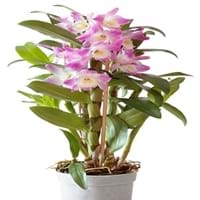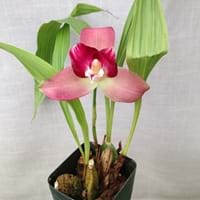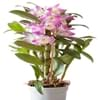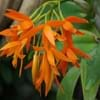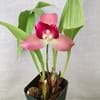Life Span
Perennial
Perennial
Origin
Southern Asia, Southeastern Asia
Mexico, Central America
Types
Not Available
not available
Habitat
Subtropical climates
Rocky areas
USDA Hardiness Zone
12-15
10-13
AHS Heat Zone
Not Available
12-8
Sunset Zone
Not Available
H2, 24
Habit
Clump-Forming
Clump-Forming
Flower Color
White, Yellow, Gold, Light Pink
Orange, Yellow green, Gold, Light Green
Flower Color Modifier
Bicolor
Not Available
Fruit Color
Non Fruiting Plant
Not Available
Leaf Color in Spring
Green, Dark Green
Not Available
Leaf Color in Summer
Green, Dark Green
Light Green
Leaf Color in Fall
Green, Dark Green
Light Green
Leaf Color in Winter
Green, Dark Green
Not Available
Leaf Shape
Long Elliptic
Long Linear
Plant Season
Spring, Summer, Fall, Winter
Summer, Fall
Sunlight
Partial Sun, Partial shade
Partial Sun, Partial shade
Type of Soil
Not Available
Not Available
The pH of Soil
Acidic, Neutral
Not Available
Soil Drainage
Well drained
Well drained
Bloom Time
Early Spring, Late Winter
Summer, Late Summer, Early Fall, Fall
Tolerances
Cold climate, Heat Tolerance
Not Available
Where to Plant?
Container, Ground, Pot
Ground, Pot
How to Plant?
Seedlings, Stem Planting
Divison, Stem Planting
Plant Maintenance
Low
Medium
Watering Requirements
Do not water frequently, Medium, Never Over-water, Water when top layer of soil becomes dry
Requires watering in the growing season
In Summer
Lots of watering
Lots of watering
In Spring
Moderate
Consistently
In Winter
Average Water
Average Water
Soil pH
Acidic, Neutral
Not Available
Soil Type
Not Available
Not Available
Soil Drainage Capacity
Well drained
Well drained
Sun Exposure
Partial Sun, Partial shade
Partial Sun, Partial shade
Pruning
Remove damaged leaves, Remove dead leaves
Prune ocassionally
Fertilizers
fertilize every 2-3 weeks while growing
All-Purpose Liquid Fertilizer, fertilize in summer
Pests and Diseases
Red blotch
Black Spot, Scale
Plant Tolerance
Drought
Not Available
Flower Petal Number
Single
Single
Foliage Texture
Medium
Coarse
Foliage Sheen
Matte
Matte
Attracts
Not Available
Not Available
Allergy
Avoid during Pregnancy
Not Available
Aesthetic Uses
Beautification, Landscape Designing, Showy Purposes
Bouquets, Showy Purposes
Beauty Benefits
Good for skin and hair
Not Available
Environmental Uses
Air purification, Food for insects
Unknown
Medicinal Uses
Cough, Fever, Immunity, tuberculosis, Vomiting
Not Available
Part of Plant Used
Flowers, Leaves, Stem
Bulbs, Flowers, Leaves
Other Uses
Can be made into a herbal tea, Decoration Purposes, Showy Purposes, Used as Ornamental plant, Used for its medicinal properties
Used as Ornamental plant
Used As Indoor Plant
Yes
Yes
Used As Outdoor Plant
Yes
Yes
Garden Design
Container, Hanging Basket, Houseplant, Rock Garden / Wall, Tropical
Container, Hanging Basket, Houseplant, Tropical
Botanical Name
DENDROBIUM farmeri
LYCASTE cochleata
Common Name
Dendrobium, Farmer's Dendrobium, Sentinel Orchid
Lycaste Orchid, Shell-shaped Anther Lycaste
In Hindi
Dendrobium
Lycaste Orchid
In German
Dendrobium
Lycaste Orchidee
In French
Dendrobium
Lycaste orchidée
In Spanish
dendrobium
Lycaste orquídea
In Greek
Dendrobium
Lycaste ορχιδέα
In Portuguese
dendrobium
Lycaste orquídea
In Polish
Dendrobium
Lycaste orchidea
In Latin
dendrobium
braemii orchid
Phylum
Magnoliophyta
Tracheophyta
Class
Liliopsida
Liliopsida
Order
Asparagales
Asparagales
Family
Orchidaceae
Orchidaceae
Clade
Angiosperms, Monocots
Angiosperms, Monocots
Tribe
Podochileae
Maxillarieae
Subfamily
Epidendroideae
Epidendroideae
Difference Between Dendrobium and Lycaste Orchid
If you are confused whether Dendrobium or Lycaste Orchid are same, here are some features about those plants to help you choose better. Many people think that these two plants have the same characteristics, but one can see Dendrobium and Lycaste Orchid Information and learn more about it. Fertilizers required for proper growth of Dendrobium are fertilize every 2-3 weeks while growing, whereas for Lycaste Orchid fertilizers required are All-Purpose Liquid Fertilizer and fertilize in summer. Hence, one should know the basic difference between Dendrobium and Lycaste Orchid if you are planning to have them in your garden to enhance its beauty.
<
Flowering PlantsImportance of Dendrobium and Lycaste Orchid
Want to have the most appropriate plant for your garden? You might want to know the importance of Dendrobium and Lycaste Orchid. Basically, these two plants vary in many aspects. Compare Dendrobium and Lycaste Orchid as they differ in many characteristics such as their life, care, benefits, facts, etc. Every gardener must at least have the slightest clue about the plants he wants to plant in his garden. Compare their benefits, which differ in many ways like facts and uses. The medicinal use of Dendrobium is Cough, Fever, Immunity, tuberculosis and Vomiting whereas of Lycaste Orchid is Not Available. Dendrobium has beauty benefits as follows: Good for skin and hair while Lycaste Orchid has beauty benefits as follows: Good for skin and hair.
Compare Facts of Dendrobium vs Lycaste Orchid
How to choose the best garden plant for your garden depending upon its facts? Here garden plant comparison will help you to solve this query. Compare the facts of Dendrobium vs Lycaste Orchid and know which one to choose. As garden plants have benefits and other uses, allergy is also a major drawback of plants for some people. Allergic reactions of Dendrobium are Avoid during Pregnancy whereas of Lycaste Orchid have Not Available respectively. Having a fruit bearing plant in your garden can be a plus point of your garden. Dendrobium has no showy fruits and Lycaste Orchid has no showy fruits. Also Dendrobium is not flowering and Lycaste Orchid is not flowering . You can compare Dendrobium and Lycaste Orchid facts and facts of other plants too.
